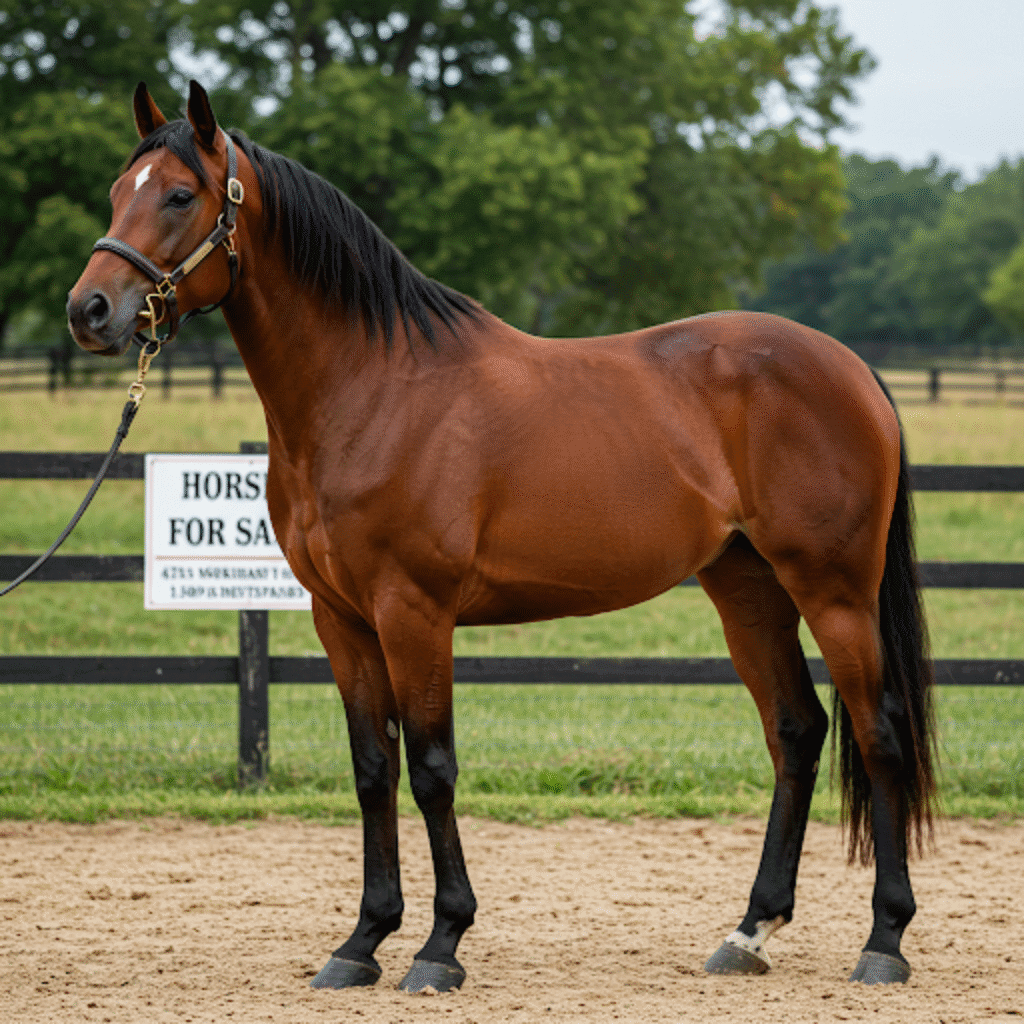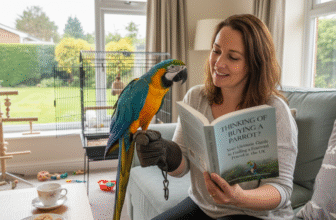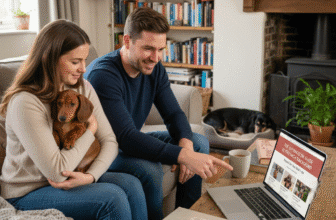
Finding Your Perfect Equine Partner: A Comprehensive Guide to Buying a Horse in the UK
The dream of owning a horse is a powerful one, conjuring images of sun-drenched hacks through rolling countryside, the thrill of competition, or simply the quiet companionship of a gentle giant. For many in the UK, this dream is deeply rooted in our equestrian heritage. However, turning that dream into reality requires careful consideration, thorough research, and a healthy dose of realism. Buying a horse is a significant commitment, both emotionally and financially, and finding the right match is crucial for a happy and safe partnership. This guide aims to navigate the exciting but often complex process of finding and purchasing a horse in the UK, helping you make informed decisions every step of the way.
Understanding Your Needs and Abilities: The First Crucial Step
Before you even start Browse adverts, the most important task is honest self-assessment. What are you *really* looking for in a horse, and what can you realistically offer in return?
- Riding Goals and Discipline: What do you want to do with your horse? Are you looking for a steady hack for leisurely rides? A talented prospect for dressage or show jumping? An all-rounder for Pony Club or Riding Club activities? Perhaps a driving pony, a showing champion, or simply a companion for another horse? Your intended discipline heavily influences the type, temperament, and conformation you should seek.

- Rider Experience Level: Be brutally honest about your riding ability and confidence. A novice rider paired with a young, inexperienced, or highly sensitive horse can be a recipe for disaster. Experienced riders might seek a challenge, but beginners or nervous riders need something safe, reliable, and forgiving. Remember, it’s often better to be slightly ‘over-horsed’ in terms of experience (i.e., the horse is more experienced than you) than the other way around, especially when starting out.
- Temperament is Key: Beyond discipline and experience, consider the horse’s personality. Do you want something forward-going and energetic, or calm and steady? Sensitive or more stoic? Good temperament and manners, both on the ground and under saddle, are paramount for safety and enjoyment.
- Age Considerations: Younger horses require more experienced handling and training but may offer longer riding careers. Older horses might come with more experience and be steadier (‘bombproof’ is a common, though rarely entirely accurate, term), but may have pre-existing health issues or limitations. A horse in its prime (say, 8-15 years old) often offers a good balance.
- Breed Influence: While temperament varies within breeds, certain breeds are often associated with specific disciplines or characteristics. Consider native UK breeds like the versatile Welsh Cob, the hardy Fell or Dales pony, the elegant Thoroughbred (often ex-racers needing specific care), or popular warmbloods known for sport. Research breeds that align with your goals, but don’t rule out a fantastic crossbreed that ticks all your boxes.
- Time Commitment: How much time can you realistically dedicate each day? Horse ownership isn’t just about riding; it involves grooming, feeding, mucking out, checking fields, and general care.
Where to Find Horses for Sale in the UK
Once you have a clearer picture of your ideal equine partner, you can start your search. There are numerous avenues to explore in the UK:
- Online Marketplaces: Websites dedicated to equestrian sales are abundant. These offer a vast selection, allowing you to filter by price, location, breed, discipline, etc. Be cautious; descriptions and photos can sometimes be misleading. Always arrange a viewing and vetting.
- Breeders: Buying directly from a reputable breeder can mean you get a horse with known lineage and early handling history. Breeders often specialise in certain types or disciplines. Look for established studs with good reputations.
- Dealers: Reputable dealers can be a good source, often having a selection of horses to try and potentially offering warranties or exchange options. However, be diligent in checking their reputation. Ask for references and ensure they are transparent about the horse’s history. Beware of dealers who rush you or seem evasive.
- Riding Schools and Livery Yards: Sometimes, riding schools sell older, reliable horses that are stepping down from regular lesson work. Your local livery yard or riding instructor might also know of horses for sale privately within their network.
- Rescue Centres and Rehoming Charities: Organisations like World Horse Welfare, Blue Cross, and the RSPCA often have horses looking for loving homes. These horses usually come fully assessed, and the centres provide excellent support. While you might not find a top competition prospect, you can find wonderful companions and riding horses, offering a second chance to an animal in need. Rehoming often involves an application process and specific requirements.
- Word of Mouth: Let your equestrian contacts (instructor, farrier, vet, friends) know you’re looking. Often, the best horses change hands privately without ever being advertised.
The Viewing Process: Assessing Your Potential Partner
Finding a promising advert is just the beginning. The viewing is your chance to see if the horse matches its description and if you feel a connection. Never buy a horse unseen.
- Initial Contact: Call the seller and ask detailed questions. Why are they selling? How long have they owned the horse? What is its daily routine? Any vices (weaving, crib-biting)? Any health issues or injuries, past or present? Does it hack alone and in company? How is it in traffic, with the farrier, vet, loading? Take notes.
- First Viewing – Ground Assessment:
- Observe in the Stable/Field: How does the horse react to your presence? Is it calm, curious, nervous, or aggressive? Check its general condition – weight, coat shine, hoof quality.
- Handling: Ask to see the horse caught, led, groomed, and tacked up. Watch how it behaves. Does it stand patiently? Is it easy to handle? Handle the horse yourself if you feel comfortable – pick up its feet, run your hands over its body.
- Conformation: While you don’t need to be an expert, look for obvious faults. Does the horse look balanced? Are its legs straight? Ask your instructor or an experienced friend to accompany you if you’re unsure.
- Seeing the Horse Ridden: Always watch someone else ride the horse first, preferably the owner or their regular rider. See how it behaves in walk, trot, and canter. Does it look comfortable, willing, and sound? Ask to see it perform tasks relevant to your discipline (e.g., jumping a small fence, performing basic dressage movements).
- Trying the Horse Yourself: If you feel safe and positive after watching, it’s your turn. Start slowly in a secure environment like an arena. Assess how the horse responds to your aids. Does it feel suitable for your ability? Does it give you confidence? Listen to your gut feeling – sometimes a horse just doesn’t feel ‘right’, even if it looks perfect on paper. If possible, try hacking out, both alone and in company, to assess its behaviour in different environments and traffic.
- Second Viewing: It’s often wise to arrange a second viewing, perhaps on a different day or time, to ensure the horse’s behaviour is consistent. You might bring your instructor for their opinion.
- Check Paperwork: Ask to see the horse’s passport (a legal requirement in the UK, containing identification details and vaccination records). Check microchip details match. Ask about vaccination, worming, farrier, and dental history. Any competition records?
The Crucial Step: Pre-Purchase Examination (Vetting)
Never skip the vetting! A pre-purchase examination (PPE) by an independent equine veterinarian is essential to assess the horse’s suitability for its intended purpose and identify potential health issues. Choose your *own* vet, not one recommended by the seller, to ensure impartiality.
- Types of Vetting:
- Two-Stage Vetting: Includes a thorough clinical examination (eyes, heart, lungs, skin, etc.) and observation of the horse walking and trotting in hand, often including flexion tests. Suitable for lower-value purchases or youngstock, but carries more risk.
- Five-Stage Vetting: The standard, recommended choice. Includes the two stages above, plus strenuous exercise (ridden or lunged), a rest period, and a second trot-up and examination to check for stiffness or lameness post-exercise. It provides a much more comprehensive assessment.
- What the Vet Checks: The vet performs a systematic examination, looking for signs of lameness, disease, injury, or conformational issues that could affect the horse’s future soundness or performance. They will listen to the heart and lungs before and after exercise, examine the eyes, check limbs and feet thoroughly, perform flexion tests, and observe the horse’s movement. Blood tests may be taken to check for prohibited substances.
- The Vet Report: The vet provides a written report detailing their findings and offers an opinion on whether, on the balance of probabilities, the horse is suitable for the intended use described by *you*. Discuss the findings thoroughly with the vet. Few horses are perfect; the key is understanding the significance of any issues identified and the potential risks involved.
Budgeting for Reality: The True Cost of Horse Ownership
The purchase price is often just the tip of the iceberg. Ongoing costs are substantial and must be budgeted for realistically.
- Purchase Price: Varies enormously based on breed, age, training, potential, etc.
- Vetting: £200-£500+ depending on the type and vet charges.
- Livery: Can range from £100-£200/month for DIY grass livery to £600+/month for full livery in expensive areas. Options include DIY (you do all the work), Part Livery (some services included), and Full Livery (all care provided).
- Feed and Forage: Hay/haylage and hard feed costs vary depending on the horse’s needs and workload (£50-£150+/month).
- Bedding: Shavings, straw, pellets etc. (£40-£80+/month).
- Farrier: Trims or shoes every 4-8 weeks (£30-£100+ per visit).
- Routine Veterinary Care: Vaccinations (£80-£150/year), dental checks (£60-£100+ per check, often annually or biannually).
- Worming: Worm egg counts and wormers (£50-£100+/year).
- Insurance: Essential! Vet fee cover, public liability, mortality, tack (£30-£100+/month depending on cover level and horse value).
- Tack and Equipment: Saddle (new or second-hand, needs fitting), bridle, headcollar, lead ropes, grooming kit (£500-£3000+ initial outlay).
- Rugs: Turnout rugs (light, medium, heavy), stable rugs, fly rugs (£200-£600+).
- Lessons/Training: £30-£60+ per session.
- Transport: Hire or purchase of a trailer/horsebox if needed.
- Contingency Fund: Always have savings for unexpected vet bills or emergencies!
Legal Aspects and Paperwork
Ensure all paperwork is in order before money changes hands.
- Horse Passport: Legally required for all equines in the UK. It confirms identity, logs vaccinations, and states whether the horse is intended for human consumption. Ensure the details match the horse and the microchip number is correct. Ownership details should be updated upon purchase.
- Microchipping: Compulsory for all horses in the UK. Check the chip corresponds to the passport.
- Sale Agreement: Highly recommended! A written contract clearly outlines the terms of sale, including horse details, price, vetting outcome, known issues, and any warranties (e.g., ‘trial periods’, though these need careful wording). It protects both buyer and seller. Templates are available online, or you can have one drawn up professionally.
- Consumer Rights: If buying from a dealer (a business), you have more consumer rights than buying from a private seller regarding the horse being ‘as described’ and ‘fit for purpose’.
Common Pitfalls to Avoid
- Buying Unseen: Never buy a horse based solely on photos or videos.
- Rushing the Decision: Feeling pressured by the seller or falling in love too quickly. Take your time.
- Ignoring Red Flags: Overlooking behavioural issues or downplaying seller comments about quirks or past problems.
- Skipping the Vetting: False economy – it can save you heartache and huge expense later.
- Underestimating Costs/Commitment: Not fully appreciating the time and financial resources required.
- Mismatch: Buying a horse that doesn’t suit your ability, temperament needs, or intended discipline.
- Not Getting a Written Agreement: Relying on verbal agreements can lead to disputes.
Bringing Your New Horse Home
The adventure continues once the purchase is complete. Allow your new horse plenty of time to settle into its new environment and routine. Introduce it gradually to any new field mates, ideally over a fence initially. Establish a consistent feeding and turnout schedule. Spend time bonding on the ground before rushing into strenuous ridden work. Be patient – it takes time to build a partnership.
Conclusion: A Rewarding Journey
Finding and buying the right horse is a journey that requires patience, diligence, and honesty. By understanding your needs, doing thorough research, conducting careful viewings, investing in a pre-purchase exam, and budgeting realistically, you significantly increase your chances of finding a wonderful equine partner. While the process can seem daunting, the reward – the unique bond and shared experiences with your own horse – is immeasurable. Take your time, trust your instincts (backed by expert advice), and embark on one of the most rewarding adventures life can offer.







